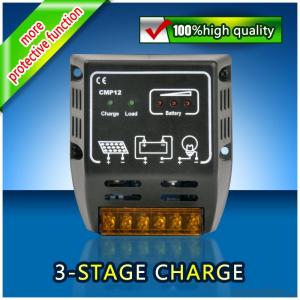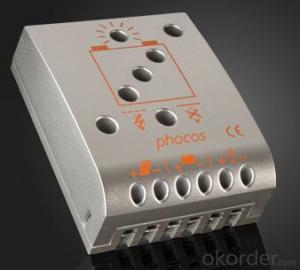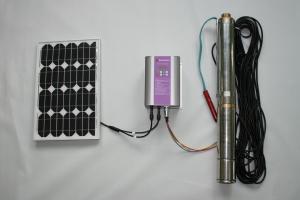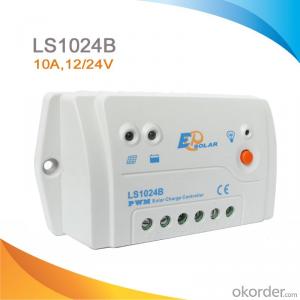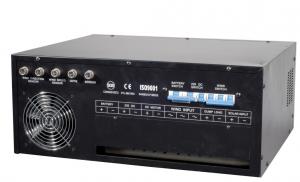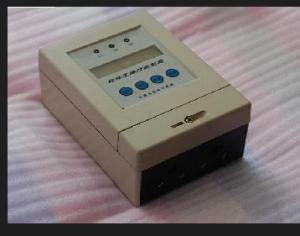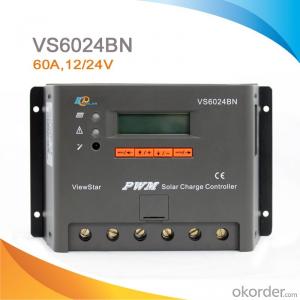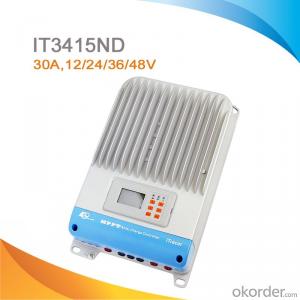Morningstar Solar Controllers - Lawn Light Solar Charge Controller Model CMB03
- Loading Port:
- Shanghai
- Payment Terms:
- TT OR LC
- Min Order Qty:
- 5 unit
- Supply Capability:
- 150 unit/month
OKorder Service Pledge
OKorder Financial Service
You Might Also Like
1. Structure of Lawn Light Solar Charge Controller Model CMB03
This solar charge controller designed for solar lawn lights, solar garden lights, mini solar street light, mini solar advertising light box and so on. The box of the controller is compact sealed with silicon. They have the function of temperature compensation during charging and Sensor Control (optional), fit for 24W /12V or 36W /12V solar panels.
2. Main Features of Lawn Light Solar Charge Controller Model CMB03
· ·Overcharging and Over discharging protection
· · Prevent the reverse current from the battery to the solar panel at night time.
· ·Automatically open the loads after sunset according to the light intensity. (Optional)
· ·Automatically close the loads:
A: battery voltage is in full condition, automatically close the loads after sunrise.
B: the voltage of battery is low; automatically close the loads in advance.
3. Lawn Light Solar Charge Controller Model CMB03 Images
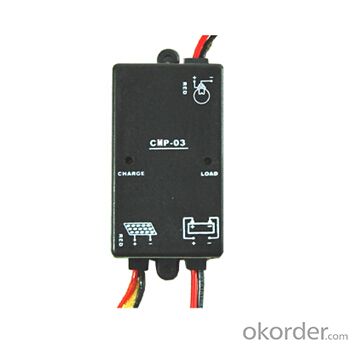
4. Lawn Light Solar Charge Controller Model CMB03 Specification
Rated Voltage | 12V |
Rated Charge Current | 3A |
Rated Discharge Current | 3A |
HVD (High Voltage Disconnection) | 14.4V |
Temperature Compensation | -3mV/℃/cell |
Size | 55×36×20mm |
LVD (Low Voltage Disconnection) | 10.5V |
LVR (Low Voltage Reconnection) | 12.0V |
Light Controller Mode | visibility 20m |
Temperature | -10- +40℃ |
Relative Humidity | ≦90% |
Net weight | 33g |
5. FAQ
We have organized several common questions for our clients, which may help you sincerely:
a) How about your company?
We are able to supply 300,000 inverters and 60,000 solar energy charge controllers per year, the products are sold toward domestic and Europe, Australia Africa and other regions in great quantities.
b) How to guarantee the quality of the products?
The company is approved by the ISO9000 quality management system with its strict product quality control. The products for exportation pass the inspection of relevant foreign nations (CE, ROHS), and get high evaluation of the customers.
c) How long can we receive the product after signing Sales Confirmation?
Generally speaking, if there is enough quantity of finished products which can meet the clients’ requirement, we can manage the delivery within three to five working days according to the instruction of the payment terms in the Sales Confirmation; if the products need some time to get ready, we will arrange thedelivery as soon as possible after the manufacture.
- Q: What is the role of a solar controller in preventing battery self-discharge?
- The prevention of battery self-discharge is of utmost importance and requires a multifaceted approach, in which the solar controller plays a vital role. The solar controller, also referred to as a charge controller or regulator, acts as a mediator between the solar panels and the battery bank in a solar power system. Its primary function is to regulate the flow of charge from the solar panels to the batteries, ensuring an efficient and effective charging process. One key method employed by a solar controller to prevent battery self-discharge is the implementation of a "low voltage disconnect" mechanism. This feature constantly monitors the battery voltage and automatically disconnects the battery from the solar panels when the voltage drops below a specific threshold. By preventing the battery from discharging beyond a safe level, the solar controller safeguards the battery against damage and extends its lifespan. Furthermore, the solar controller plays a critical role in preventing battery overcharging. Excess energy generated by the solar panels can cause the batteries to overheat and potentially fail. The solar controller addresses this issue by regulating the charging process, ensuring that the batteries receive an appropriate level of charge based on their capacity and current state of charge. Moreover, the solar controller often incorporates advanced technologies such as "pulse width modulation" (PWM) or "maximum power point tracking" (MPPT). These technologies optimize the energy transfer from the solar panels to the batteries by adjusting the voltage and current levels to match the battery's requirements. This optimization enhances charging efficiency and minimizes energy losses, effectively reducing the likelihood of battery self-discharge. In conclusion, the solar controller's role in preventing battery self-discharge encompasses the regulation of the charging process, protection against overcharging and overheating, and optimization of energy transfer. By fulfilling these functions, the solar controller ensures that the batteries remain charged, healthy, and ready for use, thereby preventing self-discharge and maximizing their performance and lifespan.
- Q: How does a solar controller handle the protection against electrical surges?
- A solar controller handles protection against electrical surges through the use of surge protection devices. These devices are designed to divert excess voltage caused by surges away from the solar controller and other connected equipment, ensuring their safety and preventing damage.
- Q: Can a solar controller be used with a solar-powered hydroponic system?
- Yes, a solar controller can be used with a solar-powered hydroponic system. A solar controller is designed to regulate and optimize the charging and discharging of batteries in a solar system. In a solar-powered hydroponic system, the solar controller can be used to ensure the efficient use of solar energy by controlling the flow of power to the system's components, such as the pumps, lights, and sensors. This helps in maintaining the optimal conditions for plant growth while maximizing the utilization of solar power.
- Q: Can a solar controller be used with a solar lighting system?
- Yes, a solar controller can be used with a solar lighting system. A solar controller helps regulate the charging and discharging of the batteries in a solar lighting system, ensuring optimal performance and longer battery life. It also helps protect the batteries from overcharging or deep discharging. Thus, using a solar controller is highly recommended for a solar lighting system to maximize its efficiency and reliability.
- Q: Can a solar controller be used in a solar-powered electric wheelchair charging system?
- Yes, a solar controller can be used in a solar-powered electric wheelchair charging system. A solar controller serves as a vital component in regulating and optimizing the charging process of solar panels. It helps manage the flow of electricity from the panels to the wheelchair's battery, ensuring safe and efficient charging.
- Q: What is the input voltage range of a solar controller?
- The input voltage range of a solar controller typically depends on the specific model and its design. However, most solar controllers are designed to operate within a wide range of input voltages, typically between 12V and 48V.
- Q: Can a solar controller handle different load types (e.g., resistive, inductive)?
- Yes, a solar controller can handle different load types including resistive and inductive loads. A solar controller is designed to regulate and control the flow of electricity from solar panels to the connected devices or loads. It is typically equipped with various protection mechanisms and adjustable settings to accommodate different load types and ensure efficient power delivery.
- Q: Can a solar controller handle high wind conditions?
- Yes, a solar controller can handle high wind conditions. Solar controllers are designed to be durable and weather-resistant, including withstanding high wind speeds. They are typically built with sturdy materials and designed to hold up in severe weather conditions, ensuring the safety and reliability of the solar system.
- Q: What is the role of a solar controller in maintaining battery health?
- The role of a solar controller in maintaining battery health is crucial. A solar controller acts as a regulator and protector for the battery connected to a solar power system. It ensures that the battery is charged and discharged properly, preventing overcharging and deep discharging, which can significantly impact the lifespan and overall health of the battery. One of the main functions of a solar controller is to monitor and control the charging process of the battery. It regulates the flow of current from the solar panels to the battery, ensuring that the battery receives the appropriate charge based on its capacity and state of charge. By controlling the charging process, the solar controller prevents overcharging, which can cause damage to the battery, such as reduced capacity or even permanent failure. Additionally, a solar controller plays a vital role in preventing deep discharging of the battery. When a battery is discharged beyond a certain point, it can lead to irreversible damage and reduced lifespan. The solar controller monitors the battery voltage and disconnects the load from the battery when it reaches a predetermined low voltage level. This helps to prevent deep discharging and ensures that the battery remains within safe operating limits. Furthermore, a solar controller often includes various protection mechanisms to safeguard the battery against potential issues. It may have features such as short-circuit protection, reverse polarity protection, and temperature compensation. These protections help to prevent any accidental damage to the battery caused by external factors or improper installation. In summary, the role of a solar controller in maintaining battery health is to regulate and protect the battery during the charging and discharging process. By preventing overcharging, deep discharging, and providing additional protection mechanisms, the solar controller helps to prolong the lifespan, optimize performance, and ensure the overall health of the battery in a solar power system.
- Q: What is the lifespan of a typical solar controller?
- The lifespan of a typical solar controller can vary depending on several factors such as the quality of the controller, usage patterns, and environmental conditions. However, on average, a well-maintained solar controller can last anywhere between 10 to 15 years.
Send your message to us
Morningstar Solar Controllers - Lawn Light Solar Charge Controller Model CMB03
- Loading Port:
- Shanghai
- Payment Terms:
- TT OR LC
- Min Order Qty:
- 5 unit
- Supply Capability:
- 150 unit/month
OKorder Service Pledge
OKorder Financial Service
Similar products
Hot products
Hot Searches
Related keywords
















